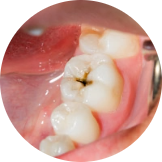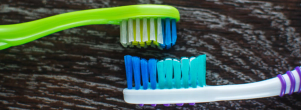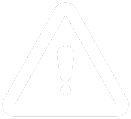When you clean the surfaces of your
teeth, especially those
hard-to-reach, in-between areas, you remove
harmful plaque. Did you know that plaque is an accumulation of
bacteria that constantly forms on your
teeth? Even while you sleep, plaque is growing and putting your
mouth at risk for:

Cavities

Gum disease (gingivitis),
which causes your gums to
be red, puffy, and tender

Bad Breath
That is why it’s important to brush your teeth
every morning and evening.
Follow these tips to take proper care of your teeth and gums.

Use a soft or extra soft toothbrush.

Keep in mind that a power toothbrush is better at
removing plaque than a manual toothbrush.

Choose your toothbrush size based on the size
of your mouth. If you have a small mouth, a
brush with a smaller head, or even a children’s
toothbrush, would be best.

Replace your toothbrush every 3 to 4 months or after you
have been sick.
- Wet the brush if you choose.
- Place a pea-sized amount of toothpaste on your
brush.
- Divide your mouth into 4 sections: top, bottom,
left, and right.
- Brush all surfaces of your teeth: cheek side, tongue
side, and biting surfaces.
- Brush for a total of 2 minutes, spending 30 seconds
in each section of your mouth.
Using a Manual Toothbrush
- Place the brush at a 45-degree angle towards the
gumline and place half the bristles on the gums and
half on the teeth.
- Use a gentle jiggling motion to ensure the bristles
reach the plaque under the gumline.
- Roll the brush away from the gums in a sweeping
motion (roll downwards on the top teeth and upwards
on the bottom teeth).
- Brush the biting surfaces using a back-and-forth
motion.
- For brushing the inside of the front teeth, turn the
brush head, place it along the gumline, and sweep
upwards on the bottom teeth and downwards on the top
teeth.
- Place the bristles at a 45-degree angle towards the
gumline with bristles pointed upwards on the top
teeth and downwards on the bottom teeth.
- Place half of the bristles on the gums and
half on the teeth (traditional brush head).
- Place the top edge of the brush head along
the gumline with some bristles on the gums
(circular brush head).
- Slowly move the brush along the teeth and gums,
following the shape of each tooth.
- Brush the biting surfaces using a back-and-forth
motion.
- To avoid splatter, turn on the brush once it is
against your teeth and gums. Close your lips over
the brush head.
- Let the toothbrush do the work. Do not put extra
pressure on the brush head while you are moving it
along your teeth and gums.

No matter which toothbrush you
use, don’t be a scrubber! Brushing
aggressively in a back-and-forth
manner can cause gums to recede.
Gum recession leads to bone loss
and, eventually, to tooth loss.

Remember to brush your tongue because it also harbours
harmful bacteria. Place your brush on the tongue and
sweep forward a few times. You can also use a
tongue scraper.

Finishing with an antibacterial mouth rinse helps to
reduce your risk of cavities while controlling bad
breath. Rinse for 30 to 60 seconds.
Brushing twice a day reduces your risk of
cavities, gum
disease, and bad breath.
It’s a quick and easy way to protect your oral and
overall health!